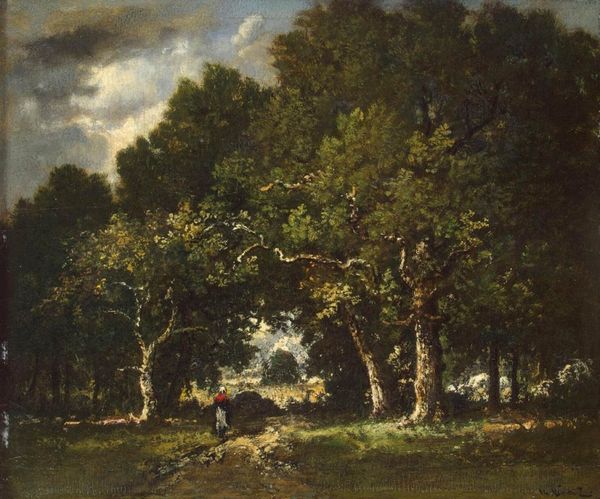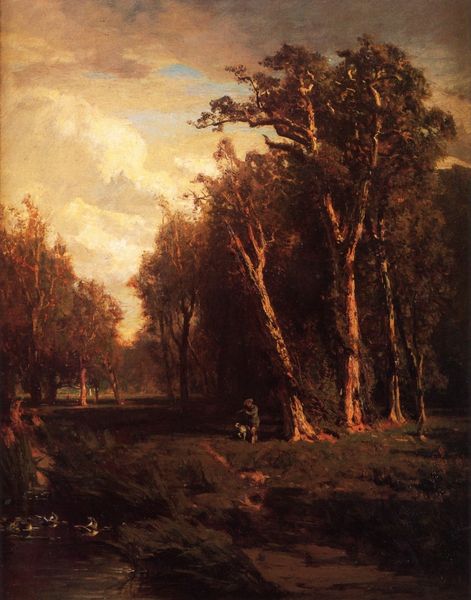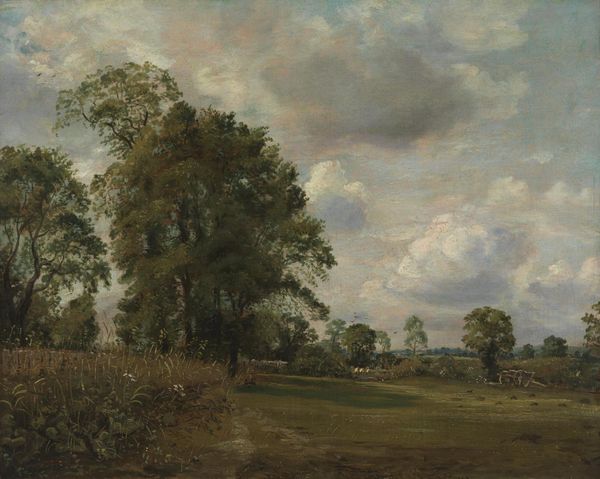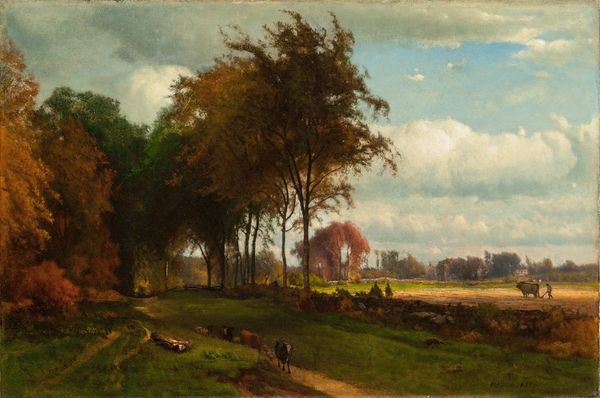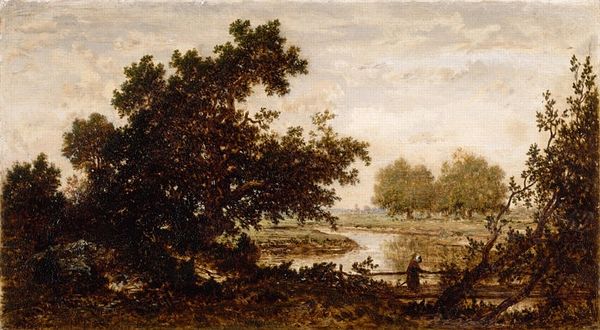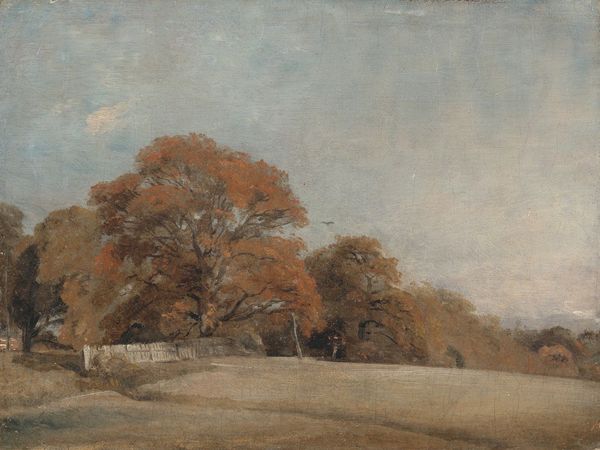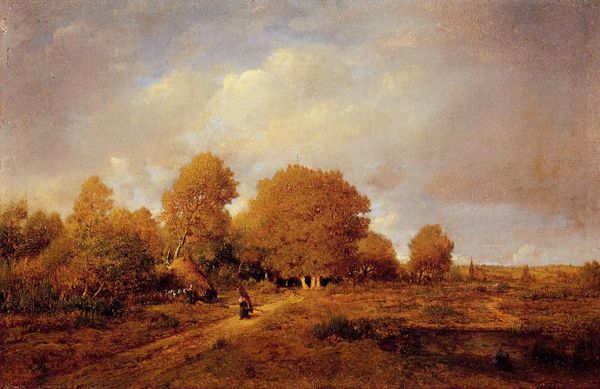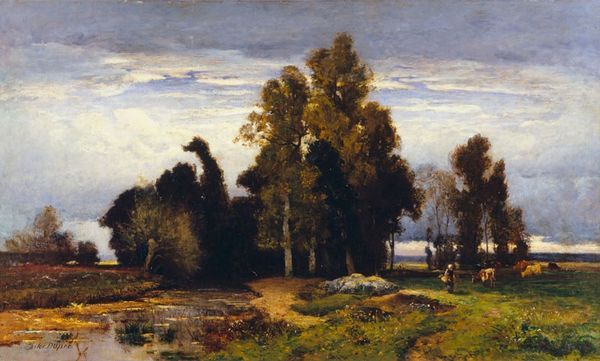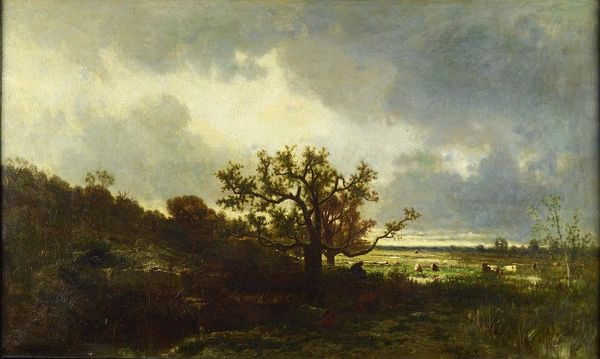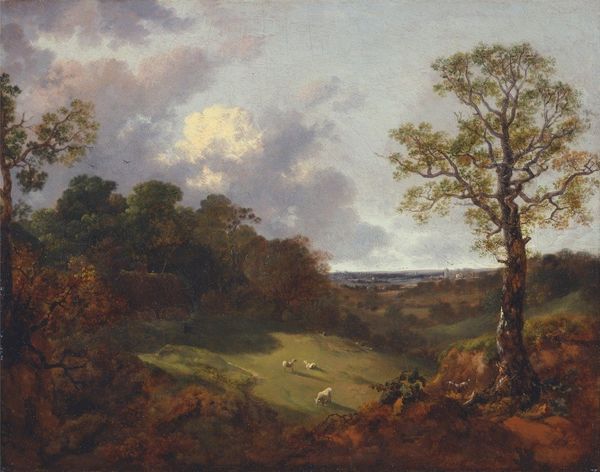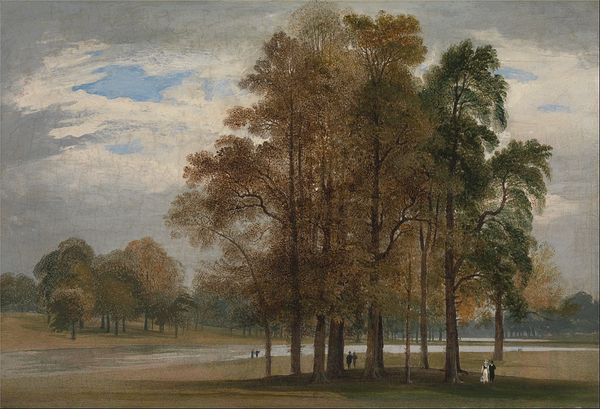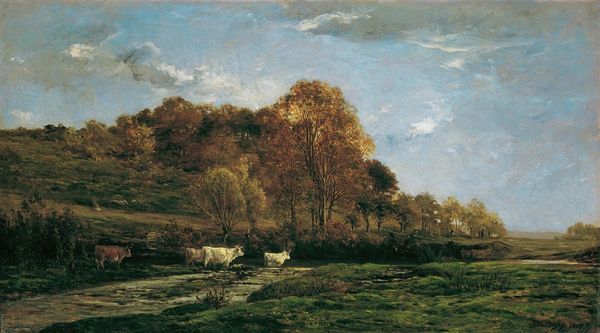
painting, plein-air, oil-paint
#
painting
#
plein-air
#
oil-paint
#
landscape
#
figuration
#
romanticism
#
realism
Copyright: Public domain
Editor: Here we have Jules Dupre’s “Autumn Landscape,” painted around 1850 using oil paint in the plein-air style. It's striking how the red foliage really pops against the muted sky. What stands out to you in this piece? Curator: What resonates most profoundly is the negotiation between Romanticism and Realism that this painting embodies. Consider the social implications of the Barbizon school opting to paint landscapes 'en plein air'--how does this shift redefine the artist's relationship to the natural world, to the socio-political context of labor and land? Do you think Dupre romanticizes rural life, or realistically portrays it? Editor: I think it might be doing both. There's definitely beauty in it, but you also get the sense that life wasn't easy back then. What do you think Dupre was trying to say about the changes happening at that time? Curator: I believe Dupre provides commentary on industrialization's encroachment upon the rural idyll. The shadows stretching across the field, almost obscuring the grazing cattle, feel imbued with a sense of foreboding. Is this simply a pastoral scene, or is Dupre subtly hinting at the displacement and social upheaval caused by urban expansion? Does the single bird flying high in the sky symbolize freedom, or rather, the vast emptiness left behind? Editor: I never thought about it that way, but the shadows really do give it a heavier feel than I first noticed. Thank you for pointing that out. Curator: The power of art lies precisely in these layers of meaning, which reflect the complex tapestry of human experience and the changing socio-political landscape. Editor: I'll definitely remember that! Now I understand Dupre's “Autumn Landscape” much better!
Comments
No comments
Be the first to comment and join the conversation on the ultimate creative platform.
